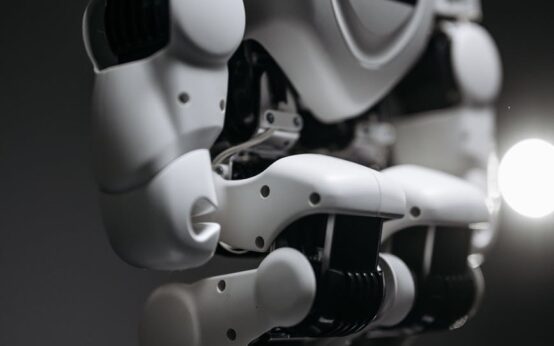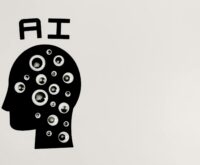The Classroom of Tomorrow is Already Here: Navigating the Rise of AI in Education
Remember sitting in a math class, completely lost, while the teacher moved on to the next topic? Or maybe you were the kid who finished the worksheet in five minutes and spent the next twenty just… waiting. The one-size-fits-all model of education has always had its cracks. Now, a powerful force is promising to patch them up and build something entirely new. We’re talking about AI in education, and it’s about so much more than just fancy gadgets or robot teachers. It’s about fundamentally rethinking how we learn, how we teach, and what a classroom can even be.
Forget the science fiction dystopias. The reality of AI in learning is less about replacing humans and more about empowering them. It’s a tool, a powerful one, that can act as a personal tutor for every student and a hyper-efficient assistant for every teacher. It’s about creating an educational experience that adapts, responds, and caters to individual needs in ways that were simply impossible a decade ago. But with great power comes great responsibility, and a lot of questions. So, let’s get into it.
Key Takeaways:
- Personalized Learning: AI tailors educational content to each student’s unique pace and style, moving beyond the one-size-fits-all classroom.
- Teacher Empowerment: By automating administrative tasks like grading, AI frees up teachers to focus on mentoring and one-on-one student interaction.
- Enhanced Accessibility: AI tools provide critical support for students with disabilities, offering features like real-time transcription and personalized learning aids.
- Ethical Considerations: The integration of AI raises important questions about data privacy, algorithmic bias, and the digital divide that must be addressed carefully.
So, What Exactly is AI in Education? (And What It Isn’t)
When you hear “AI,” your mind might jump to sentient robots from the movies. Let’s bring it back to Earth. In the context of a school, AI is basically software that can perform tasks that typically require human intelligence. This includes things like learning from data, recognizing patterns, and making predictions.
It’s not a robot standing at the front of the class giving a lecture. It is:
- The adaptive learning app that notices your child is struggling with fractions and serves up a different kind of practice problem and a helpful video tutorial, all without a teacher’s intervention.
- The software that can grade 100 multiple-choice quizzes in 30 seconds, providing instant feedback to students and a detailed performance breakdown for the teacher.
- The plagiarism checker that doesn’t just look for copied text but understands context and paraphrasing.
Think of it less as an artificial teacher and more as an artificial teaching assistant. Its job is to handle the repetitive, data-heavy tasks so the human teacher can focus on the uniquely human parts of the job: mentorship, inspiration, and fostering social and emotional skills. It’s about augmenting human intelligence, not replacing it.

The Game-Changers: How AI is Reshaping the Learning Experience
This isn’t just a minor upgrade. AI is introducing fundamental shifts in the educational landscape, making learning more effective, efficient, and engaging for everyone involved. The potential here is massive.
Truly Personalized Learning Paths
This is the holy grail. For decades, educators have dreamed of creating a unique learning journey for every single student. The logistical challenge was just too great for one teacher managing 30 kids. AI makes this dream a reality. Adaptive learning platforms use algorithms to track a student’s progress in real-time. Every correct answer, every hesitation, every mistake is a data point. The system analyzes this data to understand a student’s strengths and, more importantly, their weaknesses.
Imagine a student, let’s call her Maria, who excels at geometry but struggles with algebra. An AI-powered system won’t force her to do endless geometry drills. Instead, it might challenge her with more complex spatial problems while simultaneously providing foundational algebra exercises, tutorials, and interactive games to shore up her weak spots. Her classmate, David, might get a completely different set of problems tailored to his needs. This is differentiation on a level we’ve never seen before. It ensures no student is left behind and no student is held back.
The End of ‘One-Size-Fits-All’ Homework
Homework can be a major source of frustration for students and parents alike. Intelligent Tutoring Systems (ITS) are changing that. These platforms provide step-by-step guidance and instant feedback, much like a human tutor would. If a student gets stuck on a calculus problem, the system doesn’t just give the answer. It might ask a leading question, suggest a formula, or show a similar, solved example. It’s a 24/7 tutor that never gets tired. This immediate feedback loop is incredibly powerful for learning. Instead of waiting a day or two to find out they did an entire worksheet incorrectly, students can correct their misunderstandings on the spot, reinforcing the right methods before bad habits form.
Freeing Up Teachers for What Matters Most
Ask any teacher what they wish they had more of, and they’ll probably say “time.” A huge chunk of their day is consumed by administrative tasks—grading papers, recording marks, preparing lesson materials, and communicating with parents. This is where AI shines as a productivity tool. AI-powered software can grade everything from multiple-choice tests to complex math problems in an instant. Some advanced systems are even getting pretty good at evaluating short written answers based on a rubric.
This isn’t about making teachers’ jobs easier; it’s about making their work more impactful. When a teacher saves five hours a week on grading, that’s five more hours they can spend designing creative projects, working one-on-one with a struggling student, or providing in-depth feedback on a complex essay—the things that truly inspire a love of learning.
Beyond the Basics: Cool and Cutting-Edge AI Tools
The applications of AI in education go far beyond personalized quizzes and automated grading. We’re seeing some truly innovative tools emerge that are changing the very nature of what’s possible in a classroom.
Immersive Learning with VR and AR
Why just read about ancient Rome when you can walk through the Colosseum? AI-powered Virtual Reality (VR) and Augmented Reality (AR) are making this possible. AI can create dynamic, responsive virtual environments where students can conduct a dangerous chemistry experiment without risk, dissect a virtual frog, or take a field trip to the surface of Mars. These immersive experiences create memorable, hands-on learning moments that a textbook simply can’t replicate.
AI as a Creative Partner
AI isn’t just for STEM subjects. It’s also becoming a powerful tool for creativity and the humanities. There are AI platforms that can help students brainstorm essay ideas, check for grammatical errors and awkward phrasing, and even suggest ways to make their writing more persuasive. In coding classes, AI can act as a pair programmer, spotting bugs and suggesting more efficient code. It’s a collaborator that can help students refine their skills and push their creative boundaries.
Making Education Accessible for Everyone
This might be one of the most important applications. AI technology has the potential to level the playing field for students with disabilities. For a student with dyslexia, AI-powered text-to-speech tools can read assignments aloud. For a deaf or hard-of-hearing student, real-time speech-to-text transcription can make lectures accessible. AI can also power custom-tailored learning interfaces for students with motor impairments or learning disabilities, ensuring that every child has the opportunity to receive a quality education.

The Elephant in the Room: Challenges and Ethical Questions of AI in Education
It’s easy to get swept up in the excitement, but we have to be realistic. Implementing AI in education is a complex task riddled with significant challenges and ethical landmines that we need to navigate very, very carefully.
The Data Privacy Dilemma
AI systems run on data. To personalize learning, these platforms collect vast amounts of information about our children—their academic performance, their learning habits, even how long they pause on a certain question. This raises critical privacy concerns. Who owns this data? How is it being stored and protected from breaches? Could it be used for commercial purposes or to build profiles of students that follow them for life? Schools and parents need to demand transparency and robust security from any ed-tech provider.
Bias, Equity, and the Digital Divide
An AI is only as good as the data it’s trained on. If that data reflects existing societal biases (racial, gender, or socioeconomic), the AI will perpetuate and even amplify them. An algorithm could potentially favor students from certain backgrounds or penalize those with different learning styles. Then there’s the issue of access. If affluent school districts can afford the best AI tutors and personalized learning platforms while others can’t, AI could actually widen the achievement gap instead of closing it.
“The risk is not that AI will become too smart and take over the world. The risk is that humans will become too dumb by handing over their thinking to machines. In education, we must ensure AI is a tool for critical thinking, not a replacement for it.”
The Unmistakable Value of the Human Touch
Finally, we can’t forget that education is a deeply human endeavor. A computer can’t replicate the empathy of a teacher who notices a student is having a bad day. It can’t inspire a passion for literature or calm a child’s anxiety before a big test. Social-emotional learning, collaboration, and critical thinking are skills forged through human interaction. The goal must be to use AI to enhance human connection in the classroom, not to diminish it.

Conclusion: Embracing the Future, Wisely
The rise of AI in education isn’t a question of ‘if’ but ‘how.’ It’s happening. The potential to create a more equitable, engaging, and effective learning environment for every single student is undeniably real and incredibly exciting. AI can empower teachers to be the mentors they’ve always wanted to be and give students the personalized support they’ve always needed.
But we must proceed with our eyes wide open. We need thoughtful policies, a focus on equity, and an unwavering commitment to data privacy. We have to remember that technology is a tool, not a panacea. The magic of a great education will always come from the connection between a passionate teacher and a curious student. AI, if used wisely, can make that connection stronger than ever before.
Frequently Asked Questions (FAQ)
Will AI replace human teachers?
Almost certainly not. The consensus among educators and tech experts is that AI will augment, not replace, teachers. AI can handle administrative and data-driven tasks, freeing up teachers to focus on complex, human-centric skills like mentorship, fostering creativity, and providing emotional support. The role of the teacher will evolve to be more of a facilitator and guide.
Is AI in education expensive for schools to implement?
Implementation costs can be a significant barrier. While some AI tools are becoming more affordable and accessible as software-as-a-service (SaaS) products, a full-scale integration often requires investment in new hardware, software licenses, and crucial professional development for teachers. This raises serious equity concerns, as not all school districts have the same resources.
How can I be sure my child’s data is safe with these AI tools?
This is a critical question for parents and educators. It’s essential to vet any ed-tech platform thoroughly. Schools should have clear data governance policies in place. Parents should ask questions about where data is stored, who has access to it, and how it is used. Opt for platforms that are transparent about their data privacy policies and are compliant with regulations like COPPA and FERPA.



 Machine Learning Trends: The Future is Here
Machine Learning Trends: The Future is Here  Future of Artificial Intelligence: What’s Really Next?
Future of Artificial Intelligence: What’s Really Next?  Navigating the Ethical Concerns of Artificial Intelligence
Navigating the Ethical Concerns of Artificial Intelligence  AI for Small Businesses: A Practical Guide to Growth
AI for Small Businesses: A Practical Guide to Growth  AI and Automation: Reshaping Our World & Work
AI and Automation: Reshaping Our World & Work  AI and Automation: The Future of Work is Here
AI and Automation: The Future of Work is Here  What Are AMMs? Automated Market Makers Explained Simply
What Are AMMs? Automated Market Makers Explained Simply  NFT Legal Questions Answered: A Simple Guide
NFT Legal Questions Answered: A Simple Guide  Build a Balanced Cryptocurrency Portfolio: A 2024 Guide
Build a Balanced Cryptocurrency Portfolio: A 2024 Guide  Reading Smart Contract Audits: A Beginner’s Guide
Reading Smart Contract Audits: A Beginner’s Guide  Dynamic NFTs: The Evolving Future of Digital Assets
Dynamic NFTs: The Evolving Future of Digital Assets  How Macroeconomics Drives the Crypto Market (2024 Guide)
How Macroeconomics Drives the Crypto Market (2024 Guide)